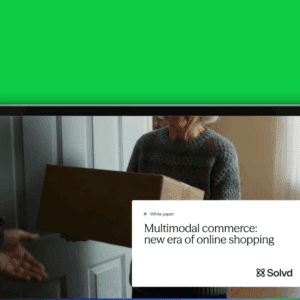By Kali Kasprzyk, Echidna

Google the phrase omnichannel for retail. The articles on this topic and stats around it are mind blowing. And still, most retailers don’t employ a true Omnichannel strategy, and those that do have only touched upon the possibilities which present themselves. Most of the time this is due to lack of knowledge or lack of budget. Neither one is an excuse in 2016. By merging the customer’s in-store and online experience, you create a journey which will drive sales, engagement and loyalty. Being knowledgeable in this space is well worth the time and effort to create this dream retail trifecta.
Let me take a quick step back before I dive into the 4 methods to improve the customer experience in the world of cross-channel retailing. First, ask yourself, is your site responsive? Responsive web sites dynamically render a web site to fit the device it is being delivered on. Next question you might ask is, why is that important? If Google officially incorporated an algorithm on the ranking of the the “mobile friendliness” of a site isn’t enough, how about when Forrester announced the number of consumers browsing and buying online will hit 270 million by 2020, driven largely by activity on mobile devices. I could write an entire post on this topic, but I digress. If you don’t have a responsive site, you must properly implement that before incorporating (any) of the methods below. Doing so will undoubtedly have a significant impact on breaking through to the hyperfast-growing mobile user community.
Onto 4 methods you can use to start improving the customer experience in the world of cross-channel retailing. Note, these are just the tip of the iceberg. Be innovative and think beyond these ideas on your specific industry niche in retail, what your buyers want (but might not know they want). Challenge your organization to be on the forefront of this emerging trend to combine the online and offline retail experience for your customer.
1. In-store Technology
This one is a great place to start. Physical installations in-store which bring together the two worlds. These can include kiosks connected to the shop database, with a custom UI to display all available products and features. In a recent development, Echidna developed a Face Chart for Sigma Beauty customers to try the products virtually. This could easily be transferred to an in-store technology experience to further the customer experience and mesh the two.
However, it doesn’t have to be so overt. Beacons, or iBeacons, are hidden pieces of technology which interact with personal devices at a very short range. These can provide additional functionality to the user directly to their phone or tablet, negating the need for a kiosk or screen installation at all.
2. Click and Collect
Click and Collect services are becoming more common for the simple reason being that as well as offering more convenience to a busy shopper who can’t wait for deliveries, they also drive customers back to the store, where up-selling opportunities are abound. For example, Kate Spade CEO Craig Leavitt announced the company’s Q4 2015 rollout of buy online, ship from store was a success and will be rolling out a formal program later this year. In an effective Ecommerce build, goods can be prepared for collection in as little as 5 minutes from ordering.
3. Store Apps
Apps are already a major part of the Ecommerce ecosystem, but the majority of them are stand-alone, for shopping online only. Store Apps can be developed which accompany the user throughout their shopping experience. These can sync with iBeacons, be updated with the latest special offers in real time, offer alternative payment methods or can just provide more detailed information on in-store products, bringing us to our next point:
4. Customer Reviews
Customer reviews are the single most influential tool people use to make their shopping decisions. It’s a mainstay of online shopping, so why not bring the process in-store. How? Beacons or QR codes could be placed on the product display and recent customer reviews could be sent directly to the browsing customer’s personal device via an in-store app, once purchase is complete, customers can be encouraged to leave their own feedback, increasing the likelihood of further sales for that product.
How does your organization leverage your customers’ digital journey with its face to face journey of your brand? Which of these do they plan to adapt in 2016?
Kali Kasprzyk is leading business development strategy at Echidna. Echidna is an eCommerce agency that delivers end-to-end solutions, from Design to Technology to Marketing expertise. We combine our love of the customer experience with business insights to create amazing eCommerce for top retail companies across the globe. Kasprzyk has 10 years of experience in marketing, sales, human-computer interaction, and web design.






